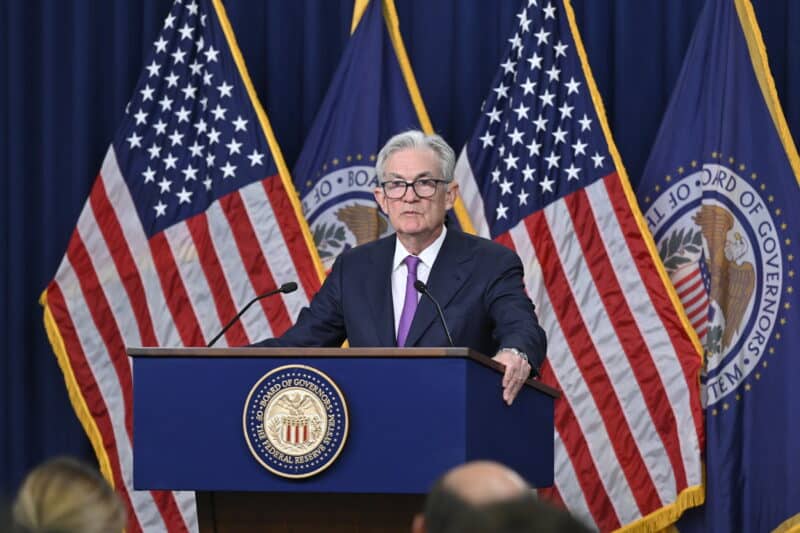PMI indicators are the best leading data for European economies, and their publication last week paints a picture of rapidly improving growth prospects, especially for the service sector.
Particularly surprising were the readings from the United Kingdom – the composite index at 54 points indicates quite strong growth in an economy at full employment. As a result, the pound experienced strong appreciation against other G10 currencies (with the exception of the Australian dollar). The Japanese yen performed the worst last week, losing over 2%. The Bank of Japan seems unconcerned that the currency is at its lowest nominal levels since the early 80s, and when adjusted for inflation, since the 60s.
This week’s calendar is packed. The first significant reading will be the preliminary report on Eurozone GDP dynamics for the first quarter published on Tuesday (30.04). The next day, Wednesday (01.05) will see the May meeting of the Federal Reserve, during which markets expect confirmation that a June interest rate cut is ruled out. Thursday (02.05) will bring the preliminary reading of April’s CPI inflation in the Eurozone, and the week will close with the NFP (non-farm payrolls) report from the US labor market (Friday 03.05).
PLN
The sentiment last week was fundamentally positive for risky assets. However, the Polish zloty experienced depreciation against the euro and performed worse than other regional currencies. This could be related to a series of disappointing publications from Poland, in light of which doubts have arisen in the market whether the previously estimated GDP growth dynamics of around 3% in 2024 are exaggerated. The data disappointed across the board (particularly the production side), however, from our perspective, it is too early to draw far-reaching conclusions. If, however, subsequent data show lower economic growth dynamics, it may encourage the market to increase the valuation of interest rate cuts this year, which could negatively impact the zloty.
Given the calendar rich in macroeconomic data, the May week on the currency market may be interesting. From a domestic perspective, it will be worth watching especially Tuesday’s (30.04) publication of preliminary data on April inflation, which is expected to spike to around the middle of the inflation target (2.5% ± 1 pp.). Thursday’s PMI data for the industry will also be important. Despite the trading break in Poland due to May holidays, higher volatility on the local market may be influenced by events from the foreign market, such as economic data from global economies or a change in central banks’ narratives.
EUR
The healthy rebound in April’s PMI indicators for business activity underscores the positive growth trend of the Eurozone economy, which barely avoided a technical recession in the second half of 2023. It is worth noting that the composite index reflects the vast dichotomy between the increasingly recessionary industrial sector and the healthily growing service sector, undoubtedly supported by full employment in the economy and a favorable balance on household accounts.
The positive surprise does not seem sufficient for the European Central Bank to abandon its commitment to an interest rate cut in June. However, any further moves will depend on how the difference between inflation paths in the Eurozone and the USA will shape up. We will learn the current picture of this difference after the publication of the preliminary CPI inflation reading in the Eurozone in April (Thursday 02.05).
USD
The report on US GDP dynamics in the first quarter contained exactly what the Federal Reserve did not want to see. Not only was the inflationary pressure surprisingly high, but strong domestic demand was offset by poor trade results, indicating that the overvaluation of the dollar is harming US competitiveness.
Wednesday’s (01.05) FOMC meeting will be a tough test of Chairman Jerome Powell’s skills. A June interest rate cut has effectively been ruled out – both by the markets and in Fed communications. However, there are still questions about whether any cost of money cuts are justified, and even the possibility of further tightening in the face of rebounding inflationary pressure. The US dollar has already experienced strong appreciation and may struggle with further strengthening unless the market begins to directly price in interest rate hikes, which is not expected.
GBP
The significant positive surprise from April’s PMI indicators means that interest rate cuts by the Bank of England before September are even less likely. The composite PMI for the UK is the highest in three years and significantly exceeds the critical level of 50 points. Last year’s technical recession will most likely turn out to be shallow and short-lived, and the second quarter of this year may bring a significant rebound in growth.
The flourishing service sector presents a clear contrast to the still-recessionary industrial sector, yet it is precisely in services where inflationary threats still lurk. A growing economy combined with full employment and persistent inflationary pressure will likely mean that interest rates in the UK will remain at a relatively high level, so we expect further
strengthening of the pound. Swap markets still price in the Bank of England’s first interest rate cut during the August meeting, with a gradual easing of monetary policy expected later in the year.
Authors: Enrique Díaz-Alvarez, Matthew Ryan, Roman Ziruk, Itsaso Apezteguia, Michał Jóźwiak – Ebury analysts
